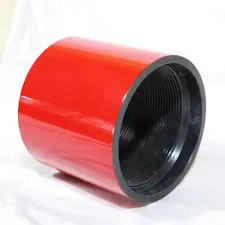Exploring the Benefits and Applications of Stainless Steel Reducer Couplings in Modern Plumbing Systems
Understanding Stainless Steel Reducer Couplings
Stainless steel reducer couplings are essential components in piping systems, primarily used to connect two pipes of different diameters. These fittings efficiently facilitate the transition from a larger pipe to a smaller one, optimizing the flow of liquids and gases in various industrial applications. Their combination of durability, corrosion resistance, and aesthetic appeal makes them an ideal choice for a range of environments.
What is a Reducer Coupling?
A reducer coupling serves a fundamental purpose in fluid transportation systems. It allows for the connection of pipes or tubes of varying diameters, ensuring a smooth and efficient flow path. The transition from a larger diameter to a smaller diameter helps to manage pressure, improve velocity, and reduce turbulence within the system. This feature is particularly important in applications where flow rate and pressure consistency are crucial.
The Role of Stainless Steel
Stainless steel is commonly used in the manufacture of reducer couplings due to its excellent corrosion resistance, strength, and hygienic properties. In environments where exposure to moisture, chemicals, or varying temperatures is prevalent, stainless steel provides an advantage over traditional materials like carbon steel or plastic. The use of stainless steel also extends the lifespan of the coupling, reducing maintenance costs and the likelihood of leaks or failures.
Moreover, stainless steel's aesthetic appeal is a bonus, especially in applications where visible piping might be a consideration, such as in architectural installations. Its polished surface not only enhances appearance but also makes cleaning easier—a valuable trait in industries like food processing and pharmaceuticals.
Applications of Stainless Steel Reducer Couplings
Stainless steel reducer couplings find extensive use across numerous industries, including
stainless steel reducer coupling

1. Oil and Gas In the oil and gas sector, these couplings are used in the transportation of oil, gas, and other fluids. Their resistance to high pressures and corrosive materials makes them a reliable choice.
2. Water Treatment In water treatment facilities, stainless steel reducers are essential in connecting various pipe sizes, ensuring smooth water flow while preventing leaks and maintaining water quality.
3. Food and Beverage The food and beverage industry recognizes the importance of sanitary and non-reactive materials. Stainless steel reducers meet hygiene standards while facilitating efficient processing and transportation of liquids.
4. Pharmaceuticals Similar to the food industry, pharmaceutical applications require materials that prevent contamination. Stainless steel’s non-reactive nature is vital in processes where product integrity is critical.
5. Construction and HVAC In construction and HVAC systems, reducer couplings help in the seamless transition between different duct sizes, ensuring optimal airflow and energy efficiency.
Installation and Maintenance
Installing stainless steel reducer couplings is a straightforward process, but it is essential to ensure that the threads are aligned correctly and that the coupling is adequately tightened to prevent leaks. Regular maintenance checks are recommended, particularly in high-stress applications, to ensure the integrity of the connections and to catch any signs of wear or corrosion early.
Conclusion
Stainless steel reducer couplings are indispensable in various applications, from industrial settings to hygiene-sensitive environments. Their combination of strength, durability, and resistance to corrosion make them a reliable choice for anyone looking to maintain efficiency and safety in their piping systems. As industries continue to evolve and demand higher quality materials and systems, stainless steel reducer couplings will undoubtedly remain a critical component in fluid and gas transportation.
-
Tubing Crossover - API Compatible, Custom Sizes, In StockNewsNov.10,2025
-
Tubing Coupling | High-Strength, Leak-Proof Steel CouplingsNewsNov.10,2025
-
Wholesale API Threading Casing Coupling | API 5CT, Fast ShipNewsNov.10,2025
-
Pup Joint Supplier | API Certified, Custom, Quick ShipNewsNov.10,2025
-
Pup Joint Manufacturers | Precision Machined, Fast DeliveryNewsNov.10,2025
-
Tubing Coupling | Precision Steel, Leak-Proof, Fast DeliveryNewsNov.03,2025







